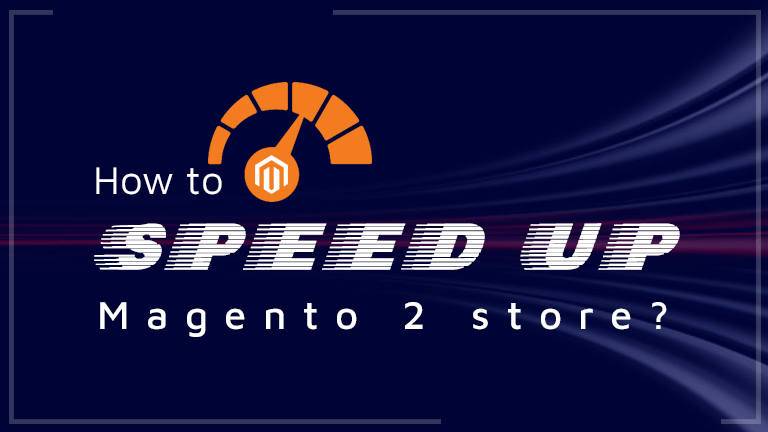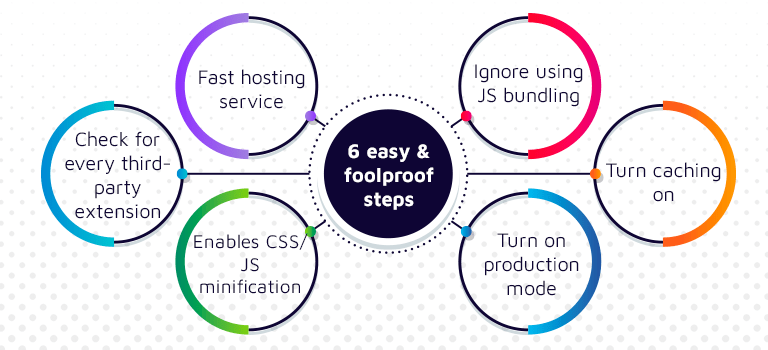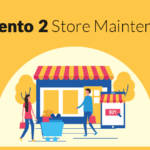Customer satisfaction is a key to please Google and improve its online presence. And being a Magneto store owner, fortunately, you have a powerful platform to serve best to your customers. Thus, if they are still bouncing back from your online store, speed could be a focal reason.
Did you know that according to John Mueller, the Senior Webmaster Trends Analyst at Google, “There’s no limit per page, but make sure they load fast for your users. I often check webpage test and aim <2 to 3 seconds.”
Is your website performing so? If not, then how would you work in this crucial part of your eCommerce store?
Well, in today’s blogs, we are talking about the same. Let’s get started!
Easy-performing ways to speed up your Magento 2 store–
- Fast hosting service- First thing first! Before we ask to perform any other Magento speed optimization technique, we want you to choose a fast hosting provider. No matter how good your M2 eCommerce store can do, but not on slow hosting service.
Rather than selecting a cheap shared hosting, choose a dedicated server to fulfill both speed and security needs. Here are few options you can choose from:
List of best Magento hosting providers-
- Hostgator- 734 ms
- Inmotion- 389 ms
- A2 Hosting- 285 ms
- Siteground- 716 ms
Also know- How Magento AWS hosting enhances your store performance?
- Ignore using JS bundling- JavaScript bundling is an optimization technique to reduce the number of server requests for Javascript files. This might sound helpful, but unfortunately, the process creates a huge file of 5-10 MB and increases website load time.
However, if you are still using JS, this is how you can reduce the impact:
- Reduce the amount of JS you used to build a page
- Compress JS
- Minify JS resource or use the third party minified resource
- Use Push and preload for critical JS
- Turn caching on- Cache management is a critical part to boost the loading of any website. When you have turned off your cache, managing it does not remove it automatically.
To check your cache management system, all you have to do is follow these simple steps- Go to the menu system > tool > cache management
If you find the enabled sign-on simply tinting in a green light, it means your caching is on. To understand the performance better, here are the benefits of caching:
- Improve the performance of extensions
- Reduce the cost of database
- Reduce the load time of the backend
- Increase read throughput
- Predictable performance
- Eliminate database hotspot
- Turn on production mode- For Magento, there are three modes: default, developer, and production. They used both default and developer modes for debugging purposes, whereas the fastest mode, production for live sites.
While turning on the production mode, it provides all necessary static files at development instead of forcing Magento to copy or locate static files during run time.
- Check for every third-party extension- Magento core is expertly designed & tested. The eCommerce store building platform does not leave much space for improvement.
Still, if you find any requirement to add an extension, audit them properly. To do that, turn on & off every extension and check if it affects your website speed. If they slow down your website speed, then try not to use that extension. Remember, an irreverent extension on your site loads Javascript files, HTTP requests, and CSS sheets that slow down your site.
However, for a detailed audit, test your font pages, category pages, product pages, and checkout pages.
Check out the other reasons for investing in eCommerce extensions.
- Enables CSS/JS minification- To cut off the need for a third-party extension, they added this feature to Magento 2. One of the crucial methods of increasing the speed of your Magento 2 website; the feature cut of using codes and markups.
Also, minification reduces the file size by rewriting and analyzing the text-based part and minimizing assets at the place of the original assets.
Apart from these, you can also optimize the product images and set up a content management system. However, make sure you don’t ruin the product image quality so much that it affects your site’s user experience, which is a crucial part of any website, especially eCommerce.
Final Thought
Magento 2 is an outstanding piece of eCommerce website technology, where some of the simple-looking yet included with vast drawbacks process could ruin your website speed. However, performing these steps can help you speed your store fast.
Looking for Magento expert help? You can reach us by clicking the link you just saw.
Have a new Project to discuss?
With magePoint, you get consistent, precise, and prompt service each and every time.




